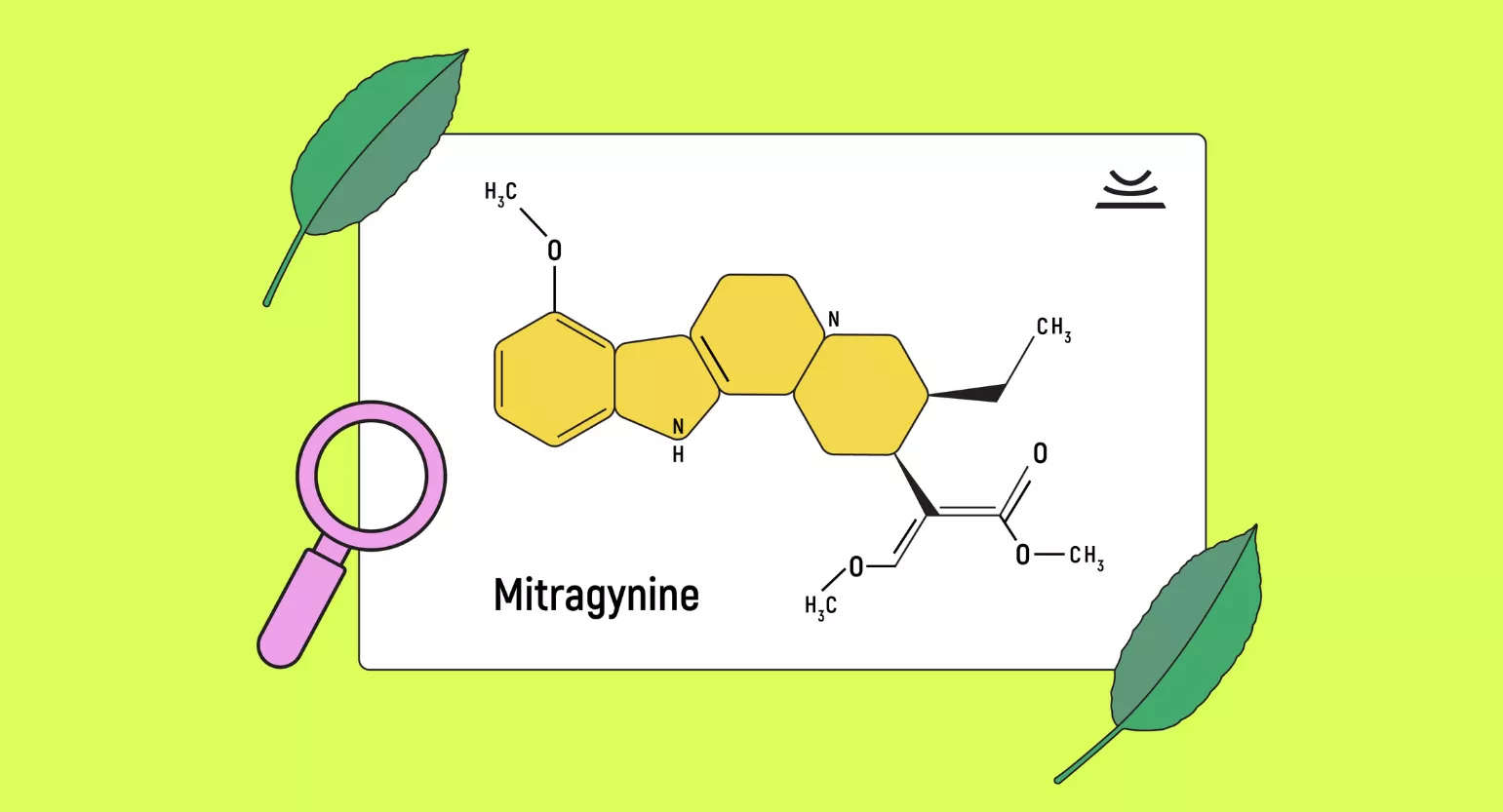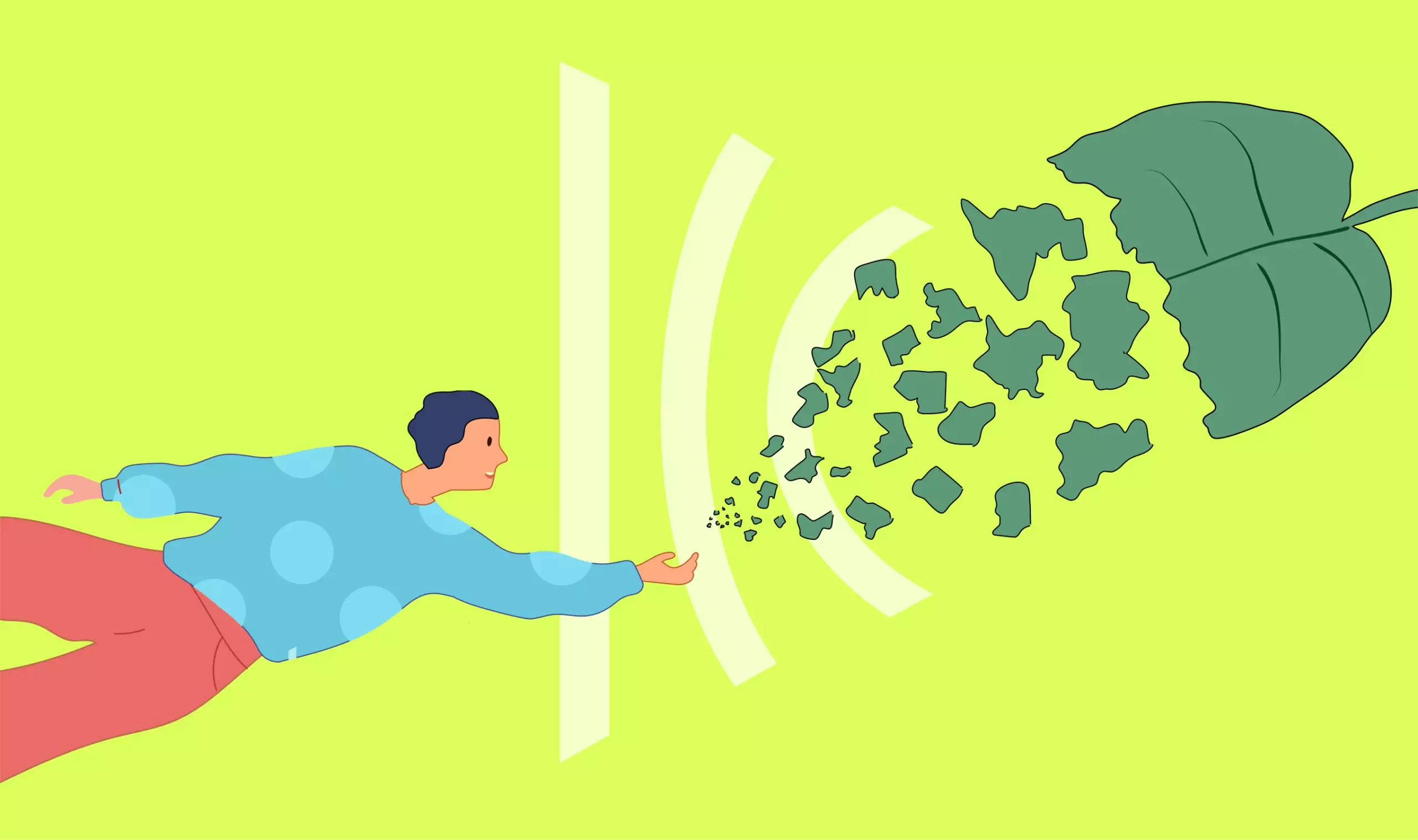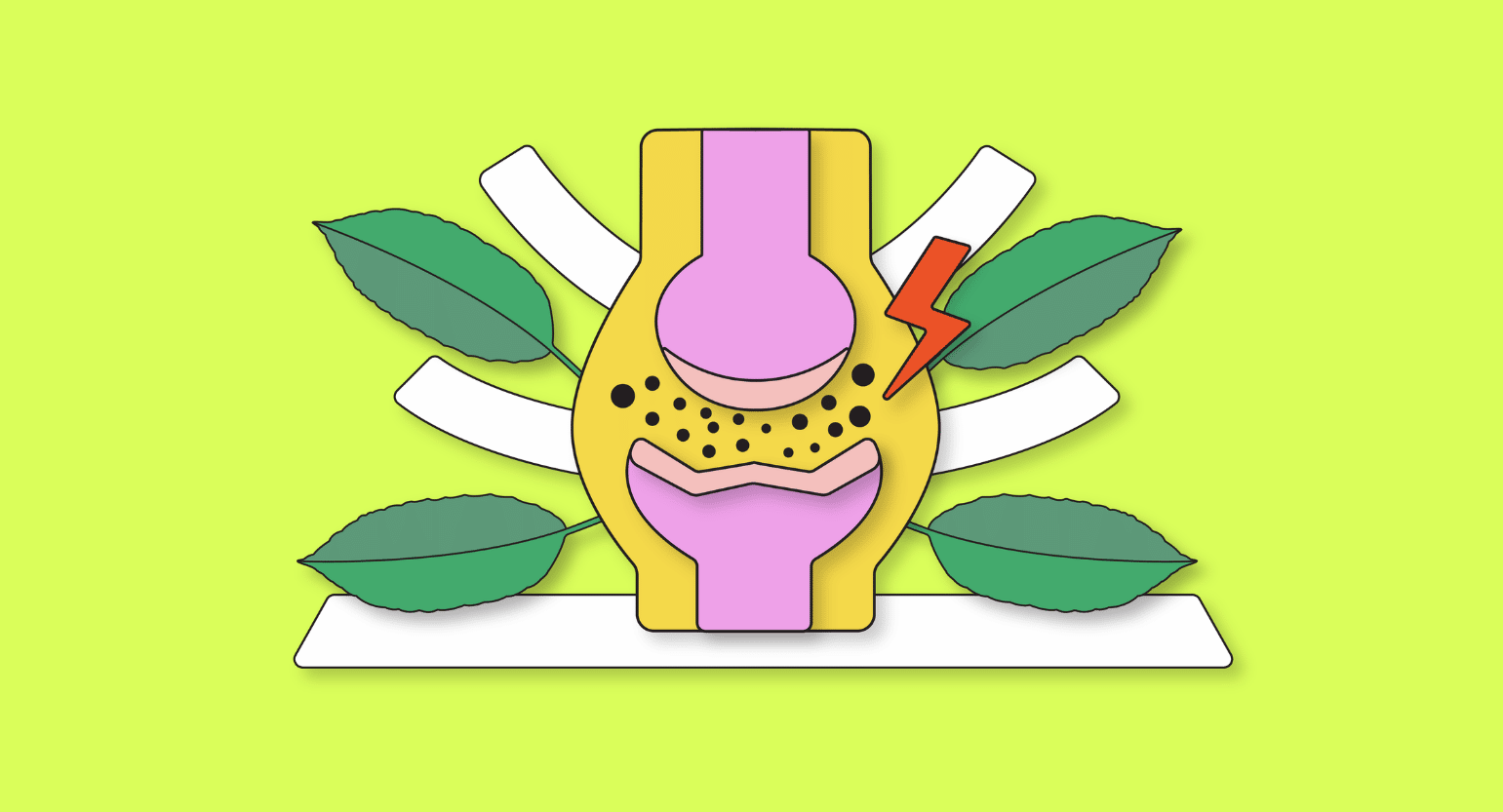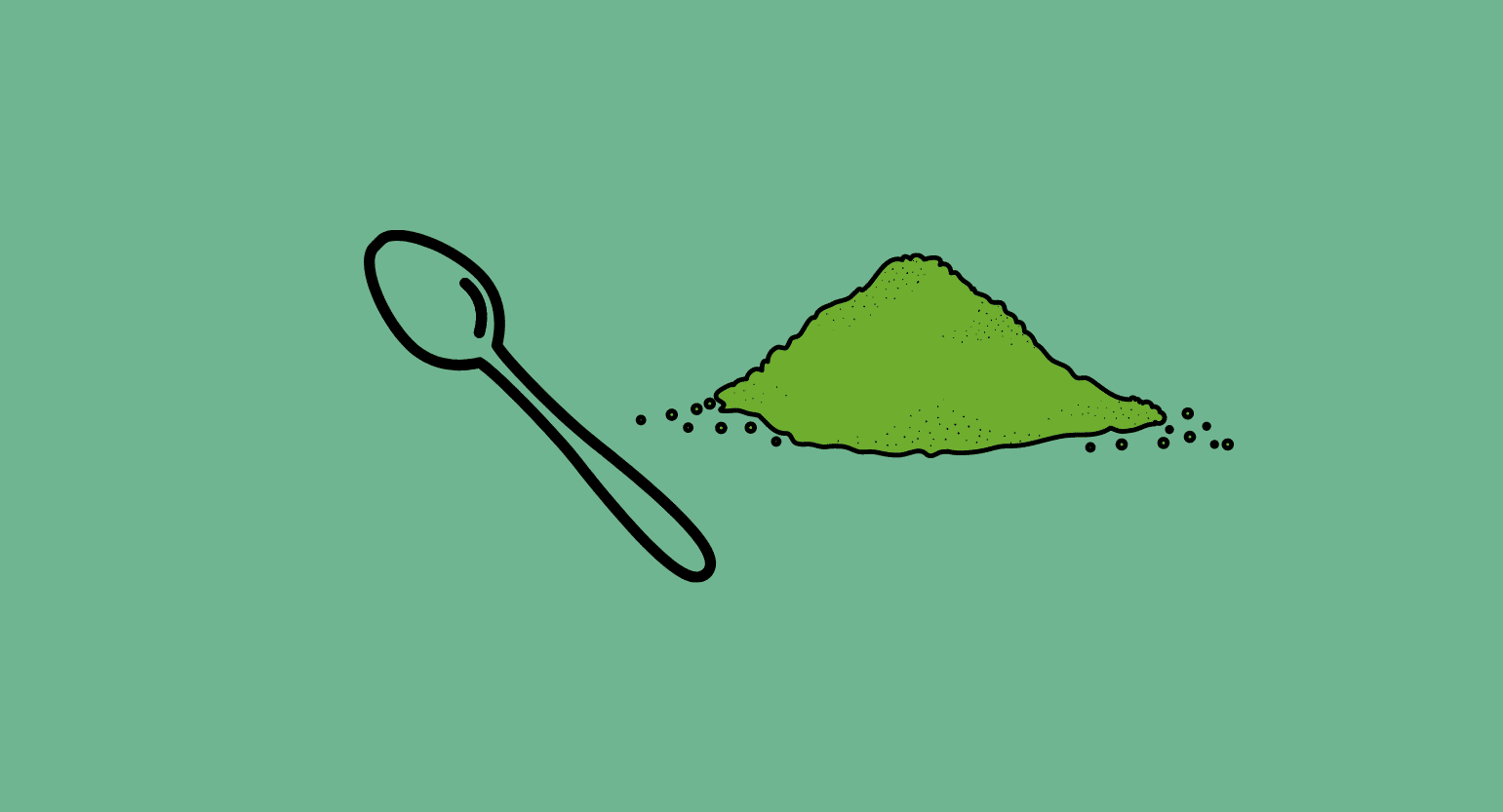What Is Mitragynine?
Mitragynine is a psychoactive alkaloid found in the Southeast Asian plant Mitragyna speciosa (kratom).
Alkaloids are a broad family of organic compounds that must contain at least one nitrogen atom. They can have many different uses, and the specific effects of each alkaloid depend on the particular chemical structure. Caffeine and nicotine are two alkaloids most people are familiar with.
Kratom contains other alkaloids in addition to mitragynine, most notably 7-hydroxymitragynine. However, mitragynine is the most prevalent alkaloid in most kratom strains and is responsible for much of kratom’s energizing properties and some pain relief.
Where Does Mitragynine Come From?
Four Mitragyna species have mitragynine: M. speciosa, M. hirsuta, M. javanica, and M. rotundifolia.
Mitragyna speciosa contains the most; the others only have a small amount. Mitragynine isn’t the only alkaloid produced by kratom plants, but it is the most abundant alkaloid by a considerable margin.
Most kratom strains contain between 0.5 and 1.5% alkaloid concentrations, most of which is mitragynine. Different kratom strains contain varying amounts of mitragynine, depending on where they’re grown and how farmers cultivate them.
Other primary kratom alkaloids include:
Which Kratom Strains Are Highest in Mitragynine?
Although all kratom strains contain some mitragynine, white kratom strains tend to have more mitragynine than green or red kratom.
Thai strains also tend to have higher mitragynine concentrations, comprising up to 66% of the total alkaloid content. By contrast, Malaysian strains only contain about 12%.
If you’re looking for a kratom strain with large amounts of mitragynine, White Thai or White Malay will likely suit you best. Other strains high in mitragynine include White and Red Borneo and Red, White, and Green Maeng Da.
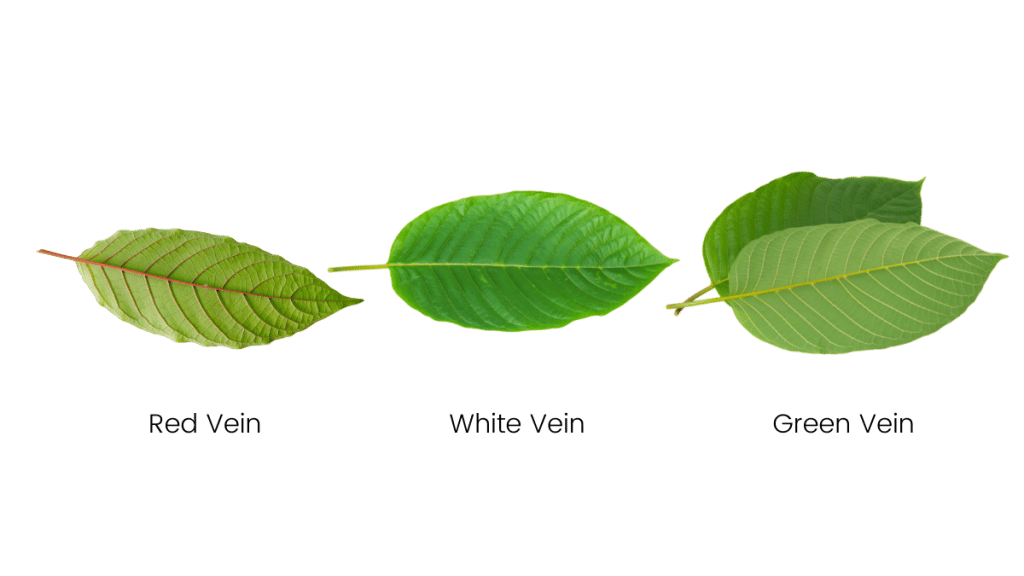
What Does Mitragynine Do & How Does It Work?
Mitragynine has several interesting physiological effects that make it a popular herbal treatment for many conditions. Below are the most common effects associated with mitragynine, along with a brief explanation of how the alkaloid produces them.
Pain Relief
Mitragynine’s most attractive quality for many people is that it is an analgesic. While it’s less effective than 7-hydroxymitragynine, it’s still a potent pain reliever. Mitragynine can also help people relax by relieving muscle tension, further reducing pain in some cases.
In higher amounts, mitragynine can ease pain by blocking pain signals before they reach the brain. Specifically, mitragynine has been shown to bind tightly to μ-opioid receptors [1]. These receptors handle nociception, or the perception of negative stimuli — like pain — traveling through the central nervous system.
Because these particular opioid receptors deal with “noxious signals,” they are the same ones that trigger positive reinforcement when suppressed [1]. This could be part of the reason why kratom users feel euphoria.
Additionally, mitragynine has antinociceptive qualities, meaning it has an affinity for both μ-opioid and δ-opioid receptors [1]. This means that mitragynine can block pain signals more effectively, as both opioid receptors are responsible for managing pain.
Mitragynine has been shown to block CA2+ channels [1], which are cellular calcium gateways responsible for several sensations, including pain [2]. This is yet another mechanism by which mitragynine’s perception of pain is limited.
Mitragynine also shows alpha-2 adrenergic agonist activity [1]. These types of agonists have strong pain relief capabilities, which is further evidence for this alkaloid’s ability to reduce the sensation of pain.
Relaxant
Since mitragynine has calming effects in larger doses, it is commonly used as a sleep aid and anxiety management tool [3]. Many kratom users report having a better handle on their anxiety when taking it, a benefit they can thank mitragynine for.
The mechanism by which mitragynine induces relaxation involves the opioid receptors to which the alkaloid binds. As mentioned above, mitragynine is an agonist of μ-opioid and δ-opioid receptors, both of which play a role in the depression of the central nervous system and sedation [4].
Mitragynine is a potent pain reliever that can also promote sleep in individuals who are kept up by pain perception. Simply relieving the pain, as mitragynine is known to do, can promote sleep.
Finally, as a δ-opioid receptor agonist, mitragynine has anxiolytic capabilities, which can suppress signals traveling through the central nervous system — even beyond pain signals — causing an anxiety reduction.
Increased Energy
Mitragynine’s effects are quite different in small doses. Taking small amounts of mitragynine can energize and enhance motivation and improve mood [5]. Some people claim that mitragynine also has mild nootropic properties, aiding in focus and enhancing general cognitive performance. Mitragynine shows psychostimulant effects along with its opioid-like activity [6].
More specifically, mitragynine has been shown to bind to dopamine receptors, causing a more significant uptake of the neurotransmitter in the brain [7]. Increased dopamine uptake is one of the primary ways more common stimulants work, as dopamine has been linked to an increased level of arousal, including boosted concentration, focus, and feelings of energy [8].
It is important to note that mitragynine is not the only alkaloid in kratom. While mitragynine plays a key role in generating kratom’s effects, it is the combination of mitragynine and other alkaloids acting in concert that ultimately creates the effects.
What Other Plants Contain Mitragynine?
Mitragynine is one of the primary alkaloids found in Mitragyna speciosa leaves but is present few other plant sources that are used for medicinal purposes.
For example, Biak (Nepenthes biak), which is a pitcher plant also indigenous to Indonesia, is known to contain several alkaloids, including mitragynine.
Yohimbe (Pausinystalia yohimbe) is a tree native to Africa that contains alkaloids — namely, yohimbine — that are structurally similar to mitragynine and produce many of the same effects [9]. While mitragynine itself is not present in this plant, the alkaloids that are create analgesic, euphoric, and stimulative effects, much like mitragynine.
The poppy plant (Papaver somniferum) is also known to contain alkaloids that are opioid receptor agonists, although mitragynine, specifically, is not present. The primary active alkaloids in poppy plants include codeine, morphine, papaverine, thebaine, and noscapine [10].
Is Mitragynine an Opiate?
Mitragynine is often compared to opiates since it has similar effects, but mitragynine is not an opiate. The pain-relieving aspect of mitragynine makes it a popular treatment for opiate withdrawal, easing the painful withdrawal symptoms and making it easier to avoid relapses.
It does interact with opioid receptors in your body, but it doesn’t cause respiratory depression, the leading cause of death in opioid overdose [5].
Suggested Reading: Is Kratom Dangerous?
Is Mitragynine Safe?
Like many natural remedies, mitragynine is generally safe if used responsibly [6]. The most significant risk mitragynine users face is addiction, drug interactions, or contaminated kratom — all of which are avoidable.
By limiting weekly intake and taking regular breaks from kratom, you’ll prevent developing dependence.
Suggested Reading: Can You Overdose on Kratom?
Side Effects of Mitragynine
Mitragynine can have unintended side effects, especially when larger amounts of kratom are taken. The most common side effects are nausea, vertigo, and mental fogginess. Experts suggest keeping your dose small if you’re concerned about experiencing unwanted side effects.

How Much Mitragynine Should I Take?
It is rare for someone to take mitragynine on its own; most people take it as kratom.
The right dose for a given person depends on their metabolism, the kratom strain they’re taking, and the effects they desire.
Most people recommend beginners stick to small doses of between 1 and 3 grams. In small amounts, kratom is stimulating and will induce a mild high. Low doses also mean the effects are less intense and last for shorter durations.
More experienced users and people looking for a relaxing experience can up the dose to 3-6 grams. In this range, kratom produces a noticeable soothing effect and offers significant pain relief.
For even more pain relief and an intensely calming effect, users can take somewhere around 8 to 10 grams. This dose range can be too intense for some people, and it is more common for people to experience side effects when taking more significant amounts.
If you’re unsure, a kratom dose calculator can help you get an approximate amount based on your weight and desired effects.
How Long Do the Effects of Mitragynine Last?
How long the effects of mitragynine last depends on how much you take. Low kratom doses in the 2 to 5-gram range typically have effects that last for 1-2 hours. Effects from larger doses between 5 and 10 grams last longer, often upwards of 3-4 hours.
Mitragynine has a biological half-life in the human body of around three and a half hours [7]. This means that significant amounts of mitragynine remain in your system for the first few hours after consumption.
However, there typically won’t be any noticeable psychoactive effects after an hour or two at smaller doses, even though mitragynine is still present in your body.
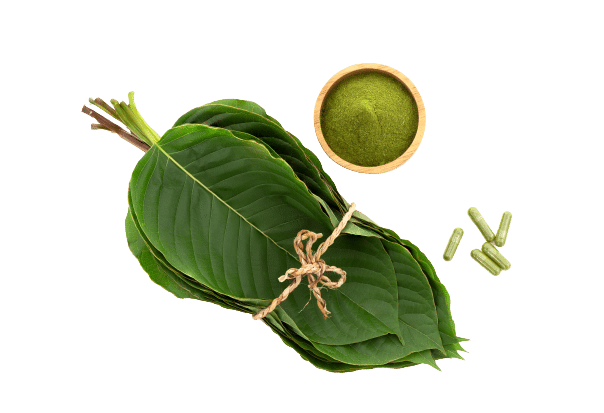
Wrapping Up: Final Thoughts on Mitragynine
Mitragynine is the predominant alkaloid in kratom, giving it many of its psychoactive properties. It is a mild analgesic, can induce euphoria in small amounts, and aids sleep and relaxation at higher doses.
Most people take mitragynine by taking kratom; it’s important to remember that kratom contains other alkaloids that create the overall experience.
Mitragynine’s effects typically last for a few hours, with larger doses leading to results that last longer. Even after the perceptible effects subside, mitragynine remains present in the human body for almost a week.
- Suhaimi, F. W., Yusoff, N. H., Hassan, R., Mansor, S. M., Navaratnam, V., Müller, C. P., & Hassan, Z. (2016). Neurobiology of Kratom and its main alkaloid mitragynine. Brain research bulletin, 126, 29-40.
- Simms, B. A., & Zamponi, G. W. (2014). Neuronal voltage-gated calcium channels: structure, function, and dysfunction. Neuron, 82(1), 24-45.
- Vicknasingam, B., Chooi, W. T., Rahim, A. A., Ramachandram, D., Singh, D., Ramanathan, S., … & Chawarski, M. C. (2020). Focus: Plant-based Medicine and Pharmacology: Kratom and Pain Tolerance: A Randomized, Placebo-Controlled, Double-Blind Study. The Yale Journal of Biology and Medicine, 93(2), 229.
- Machelska, H., & Celik, M. Ö. (2018). Advances in achieving opioid analgesia without side effects. Frontiers in pharmacology, 9, 1388.
- Suhaimi, F. W., Yusoff, N. H., Hassan, R., Mansor, S. M., Navaratnam, V., Müller, C. P., & Hassan, Z. (2016). Neurobiology of Kratom and its main alkaloid mitragynine. Brain research bulletin, 126, 29-40.
- Prozialeck, W. C., Jivan, J. K., & Andurkar, S. V. (2012). Pharmacology of kratom: an emerging botanical agent with stimulant, analgesic and opioid-like effects. Journal of Osteopathic Medicine, 112(12), 792-799.
- Johnson, L. E., Balyan, L., Magdalany, A., Saeed, F., Salinas, R., Wallace, S., … & Grundmann, O. (2020). Focus: Plant-based Medicine and Pharmacology: The Potential for Kratom as an Antidepressant and Antipsychotic. The Yale Journal of Biology and Medicine, 93(2), 283.
- Loi, B., Sahai, M. A., De Luca, M. A., Shiref, H., & Opacka-Juffry, J. (2020). The Role of Dopamine in the Stimulant Characteristics of Novel Psychoactive Substances (NPS)—Neurobiological and Computational Assessment Using the Case of Desoxypipradrol (2-DPMP). Frontiers in Pharmacology, 11, 806.
- Veltri, C., & Grundmann, O. (2019). Current perspectives on the impact of Kratom use. Substance abuse and rehabilitation, 10, 23.
- Khan, Z. H., Khan, M. M. A., Aftab, T., Idrees, M., & Naeem, M. (2011). Influence of alginate oligosaccharides on growth, yield and alkaloid production of opium poppy (Papaver somniferum L.). Frontiers of Agriculture in China, 5(1), 122-127.
- Harun, N., Hassan, Z., Navaratnam, V., Mansor, S. M., & Shoaib, M. (2015). Discriminative stimulus properties of mitragynine (kratom) in rats. Psychopharmacology, 232(13), 2227-2238.
- Boyer, E. W., Babu, K. M., Adkins, J. E., McCurdy, C. R., & Halpern, J. H. (2008). Self‐treatment of opioid withdrawal using kratom (Mitragynia speciosa korth). Addiction, 103(6), 1048-1050.
- Veltri, C., & Grundmann, O. (2019). Current perspectives on the impact of Kratom use. Substance abuse and rehabilitation, 10, 23.
- Eastlack, S. C., Cornett, E. M., & Kaye, A. D. (2020). Kratom—Pharmacology, clinical implications, and outlook: a comprehensive review. Pain and therapy, 9(1), 55-69.

